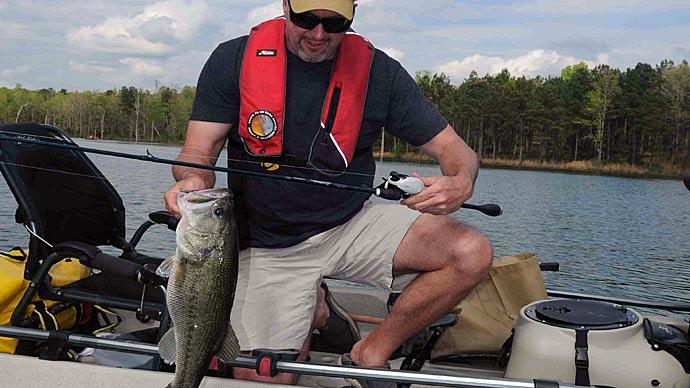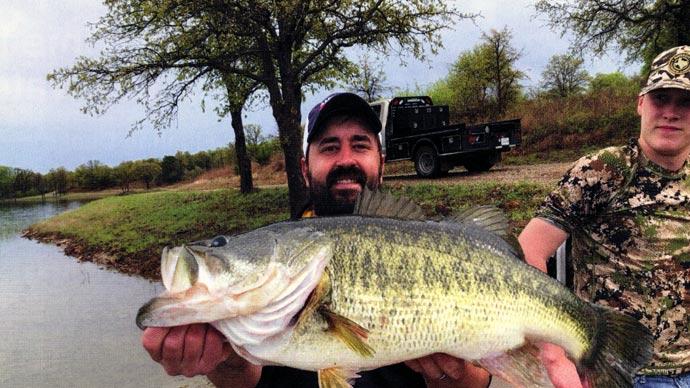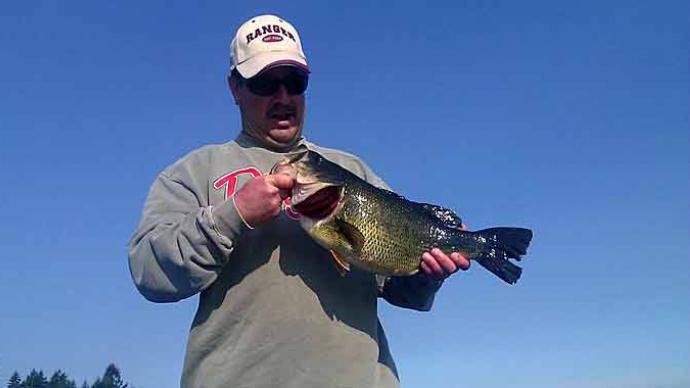
Like many others, bass fishing is a sport in which understanding the opponent allows one to become more successful. You may compare it to deer hunting: the more the hunter understands the scrapes, trails, food areas, water areas, runs, and habitats, the more successful the hunter will become at locating them.
The same is true with bass fishing. The more you understand the bass and the many different circumstances and conditions you run across, the more successful you will catch them. So let's talk about a few critical factors to understand the bass better.
The first one we will look at would be the survival of the bass. A bass needs food, oxygen, and cover to survive. If any one of these three elements is not present in a body of water, a bass could not survive; and just knowing why these three elements are so crucial for survival will already make you a more successful angler.
Food
Contrary to popular belief, shad is NOT the primary choice of bass. Although shad is a widespread food for the bass and other natural baits, the number one food choice of a bass is a crawfish (also known as crayfish, crawdads, etc.). A study was performed several years ago where one hundred crawfish and one hundred shad were in a tank of water with all bass species (Smallmouth, Spotted, and Largemouth). The crawfish were eaten 8 to 2 over the shad to much surprise.
There are several reasons for this, but the most important is that crawfish are easy prey for bass to find and catch. And it's crucial to know, contrary to popular belief, studies show that more crawfish are found in vegetation areas than around rocky areas (or, as some may know, Rip-Rap.)
Bass will eat just about anything at any given time. These include rats, mice, ducklings, frogs, snakes, salamanders, worms, lizards, grubs, baitfish, insects, leeches, and more. Is it any wonder why many different tackle manufacturing companies have so many different shapes and types of artificial baits on the market today? But, there are certain types of artificial baits that bass usually prefer over the others. Those are the ones that closely resemble natural prey.
Oxygen
Oxygen is an element that all living creatures need to survive. By knowing water oxygen content in various areas, an angler will better understand why a bass acts the way it does under many different conditions. When a bass has a limited oxygen supply, it tends to get more disoriented and much slower or lethargic. The key in understanding oxygen levels is the cooler the water, the more oxygen content, and the warmer the water, the less oxygen content. The more oxygen a bass can get, the more active it will be. During the summer, when the water temperature hits the 80-degree mark or higher, the oxygen level in the water will start to diminish.
How does this relate to bass fishing? Bass will usually do one of two things in a low oxygen situation. They will drop down to cooler water for a larger supply of oxygen or head for vegetation areas because of the constant supply of oxygen that aquatic plants provide. This is primarily the case during the spring, summer, and early fall.
Here are some areas where ample supplies of oxygen can be found during these seasons:
- Rivers - because of the constant flowing of water.
- Mouths of Creeks - again, because of the constant in-flow of freshwater.
- Deepwater areas - remember, deeper, cooler water has a better oxygen supply (above the thermocline).
- Vegetation areas - aquatic plants are constant oxygen producers.
- Around trees, stump, & log areas - Porous wood holds oxygen.
- Power Plants - because of the constant discharge of oxygenic water.
- Wind Blown Banks - a constant oxygen source.
And there are many others........
Cover
The cover is an essential element when it comes to bass fishing. A bass, being known mainly as an ambush fish, will use cover and structure such as vegetation, rocks, stumps, trees, fall downs, docks, ledges, and holes to dart out after prey. A bass is a lazy-by-nature type of fish and will expend the least energy for the greatest benefit. Bass are also known as territorial fish and will not travel a significant distance.
Understanding a bit more about the cover and why a bass will usually be found around it should help you find bass under bluebird skies" (high-pressure periods) and overcast or cloudy days" (low-pressure periods). Active, feeding bass will always be in and around cover.
I hope this article will help you better understand a bass to become a more successful angler.
Until next time.....Take Care & God Bless!
Continue to Understanding Bass Part-2



